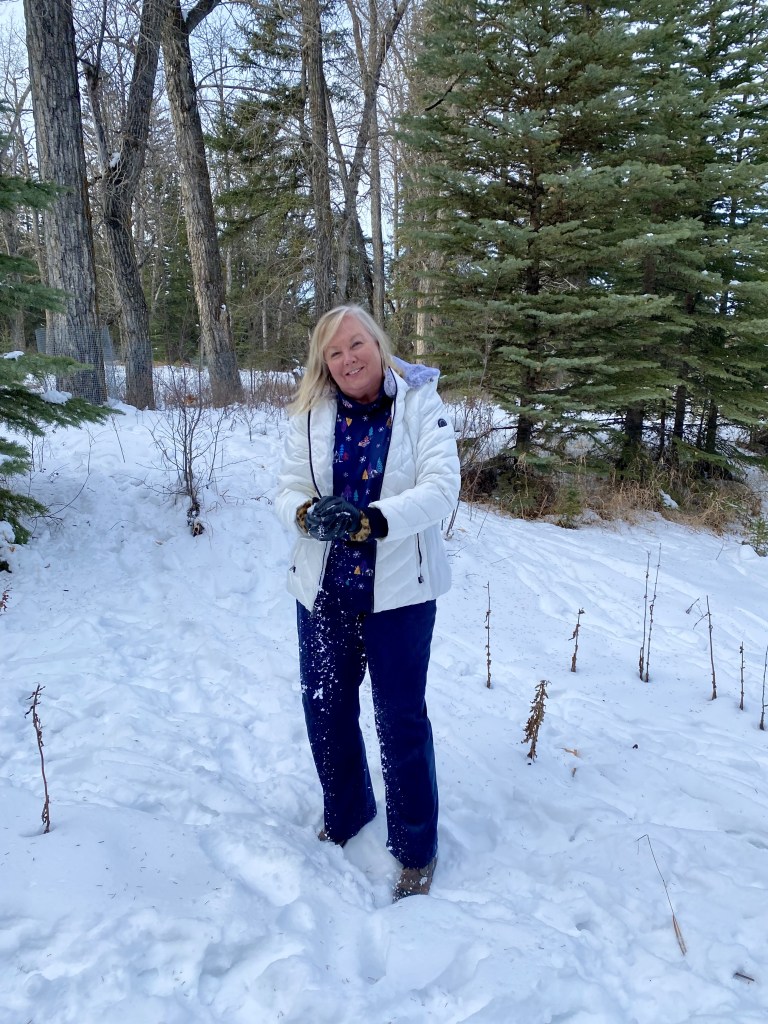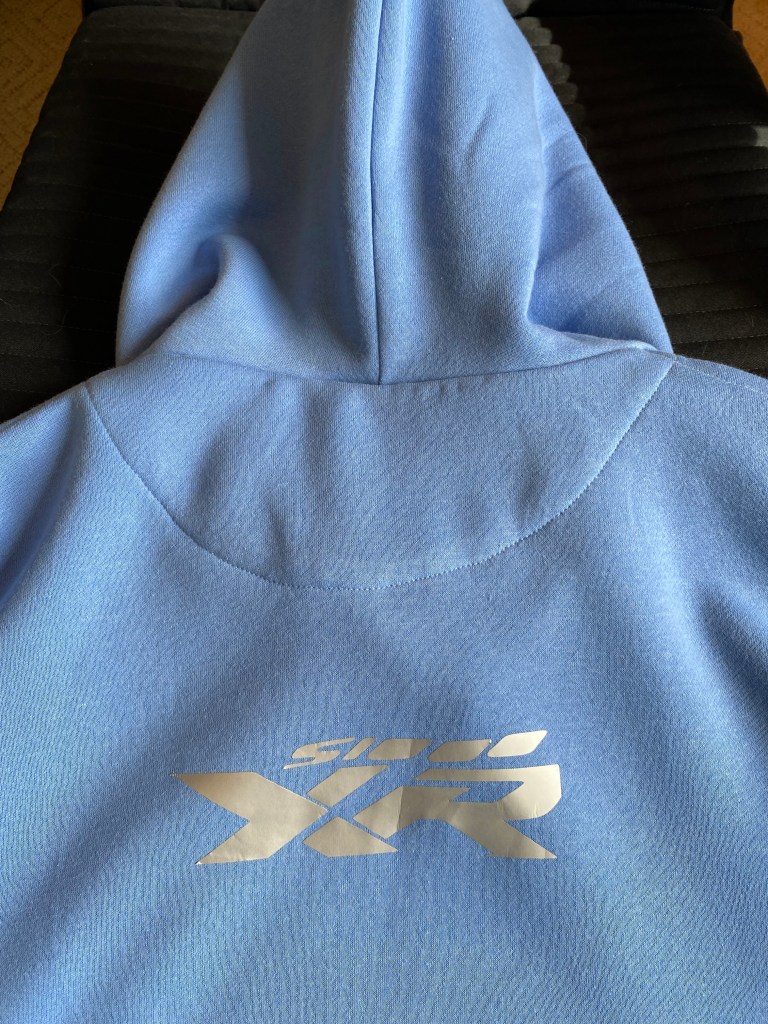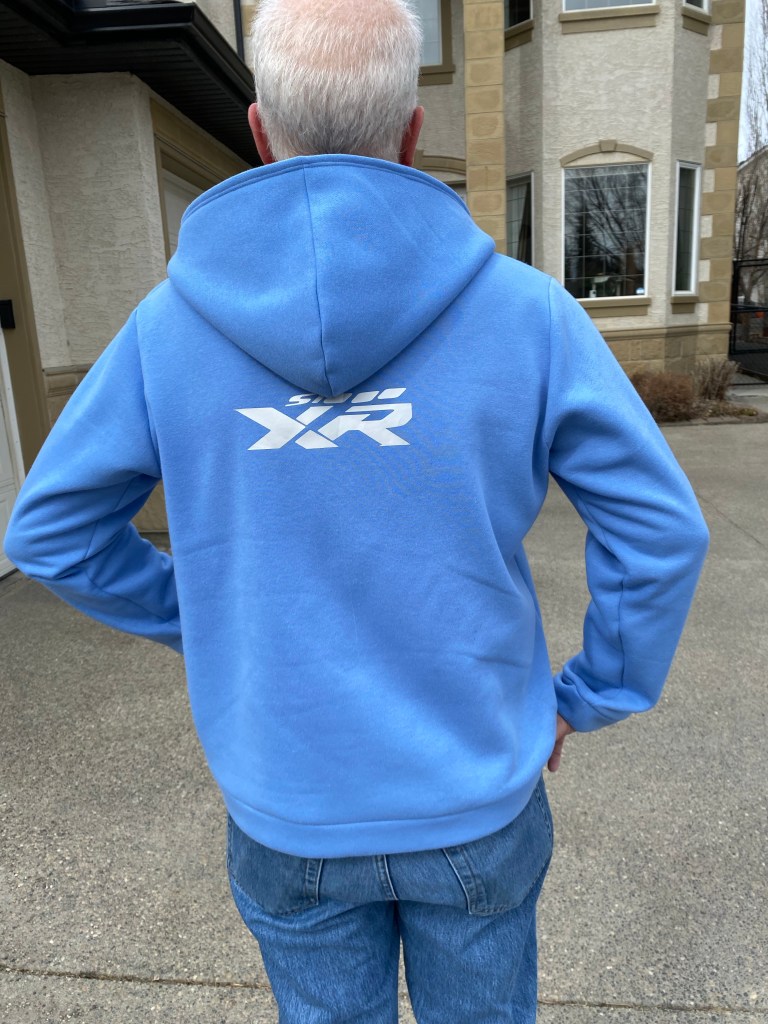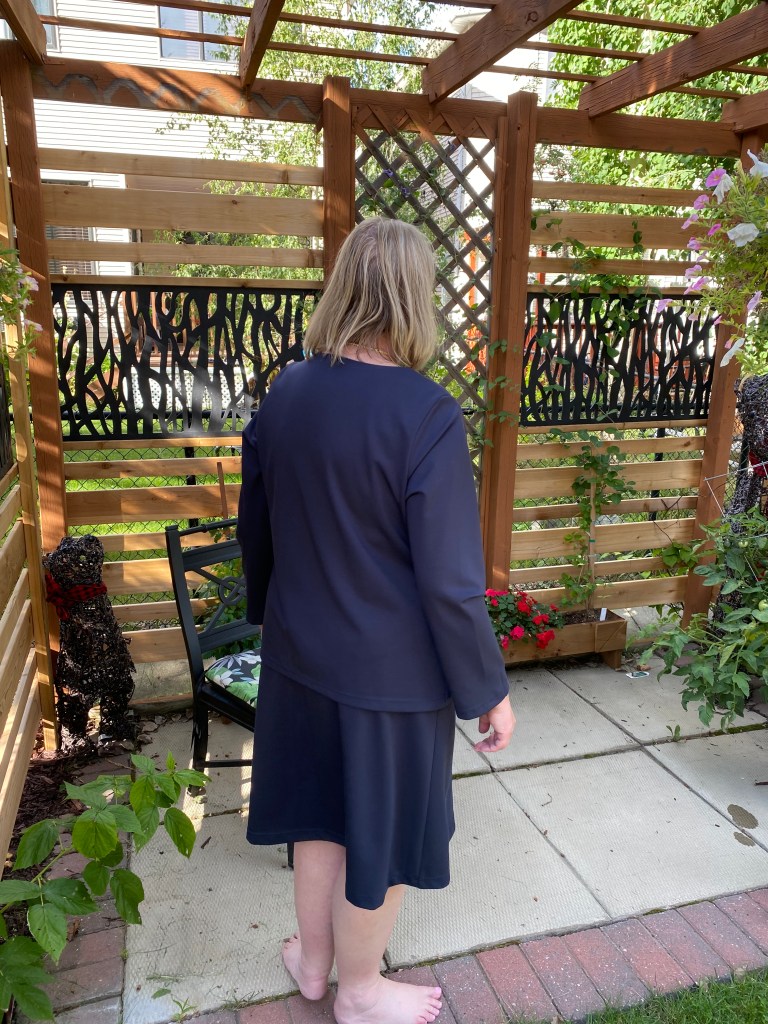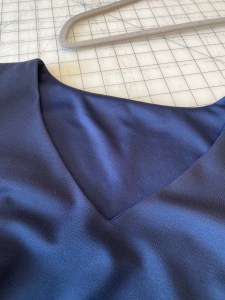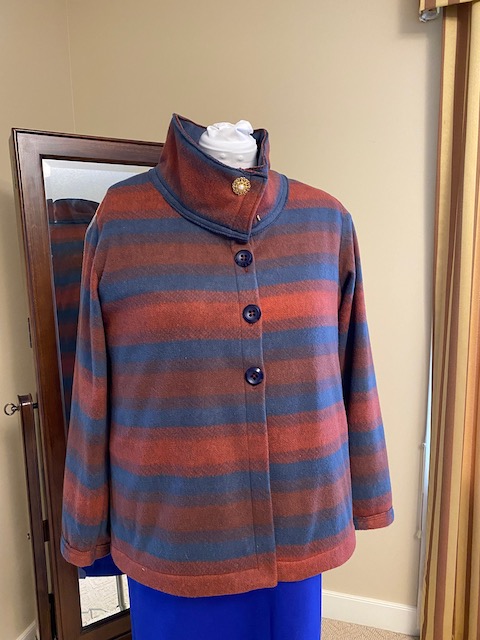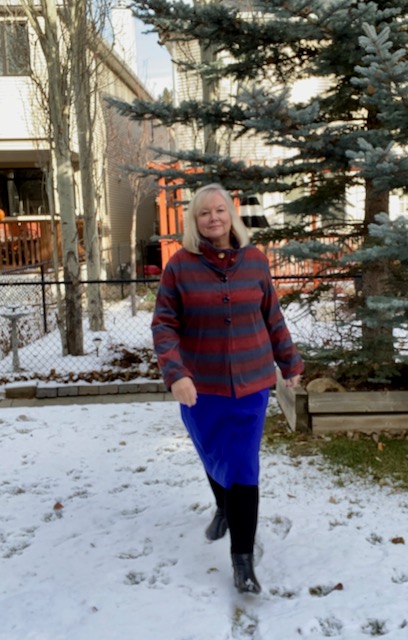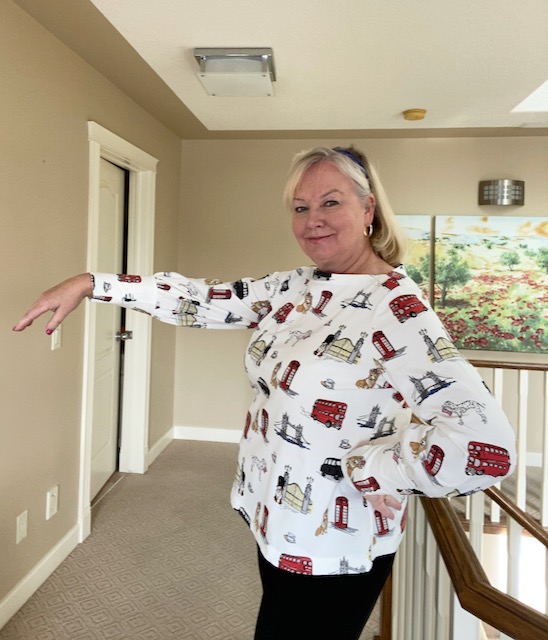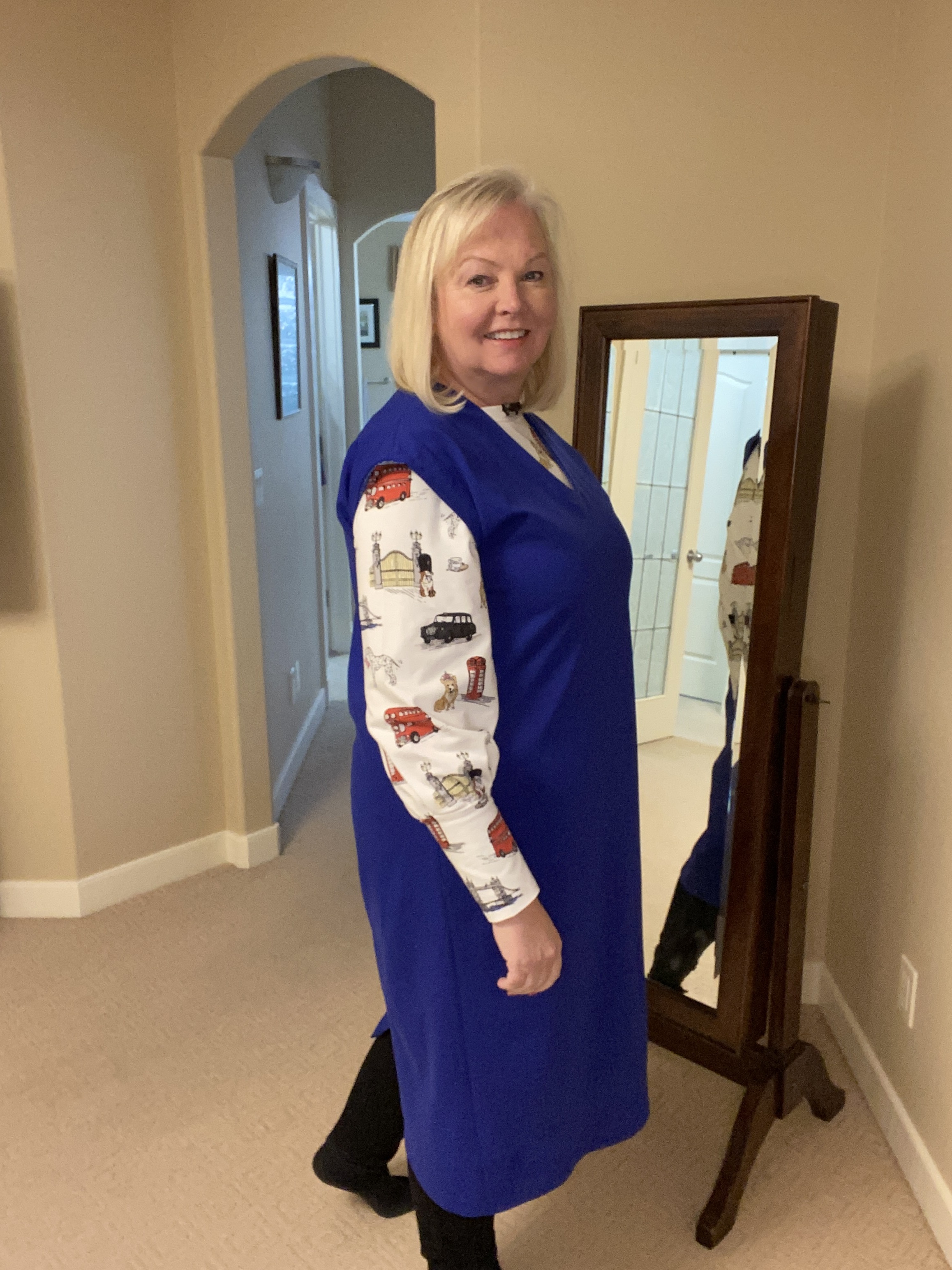An Outfit for First Snow of the Season
We had a marvellous autumn in western Canada with warm dry days and just a couple of hints of frost. When I was perusing Fabric Mart Fabric’s site in October, I was tempted to focus on pretty florals for blouses or dresses but part of me knew that … (da dah dum … ) winter was coming. Fortunately, Fabric Mart was stocked with a huge selection of cooler weather fabrics that are perfect for winter or holiday sewing.
Over the past several months I’ve been planning my sewing projects so I have pieces that work together so I decided to pick a print fabric for a top, and a solid for pants, using navy as the base.
Pants
For the pants I selected a Poly/Nylon/Spandex Stretch Corduroy in Navy. Corduroy is great for cooler weather, but if you live in a cold climate with blast furnaces you know that heavyweight cord can feel good outdoors but too warm when you come inside. This fine 14-wale corduroy is warm enough to wear outdoors but will be especially comfortable indoors. It also has a bit of drape which makes it nice for trousers. And who doesn’t want some stretch?
I selected Vogue 9181 (Custom-Fit Bootcut Pants) because it is designed for stretch woven fabrics, it has bootcut legs, and it has a front mock zip. For the past several months I’ve been working on the Top Down Center Out fitting method for pants and this pattern, with its shaped waistband, works especially well when learning Top Down Center Out. I first made a half-toile using muslin, then marked up the pattern and cut out the corduroy. The fabric was really easy to cut and sew. It does shed a bit but not nearly as much as cotton corduroy. I used a stretch needle and sewed the seams on my sewing machine, then serged the seam allowances.
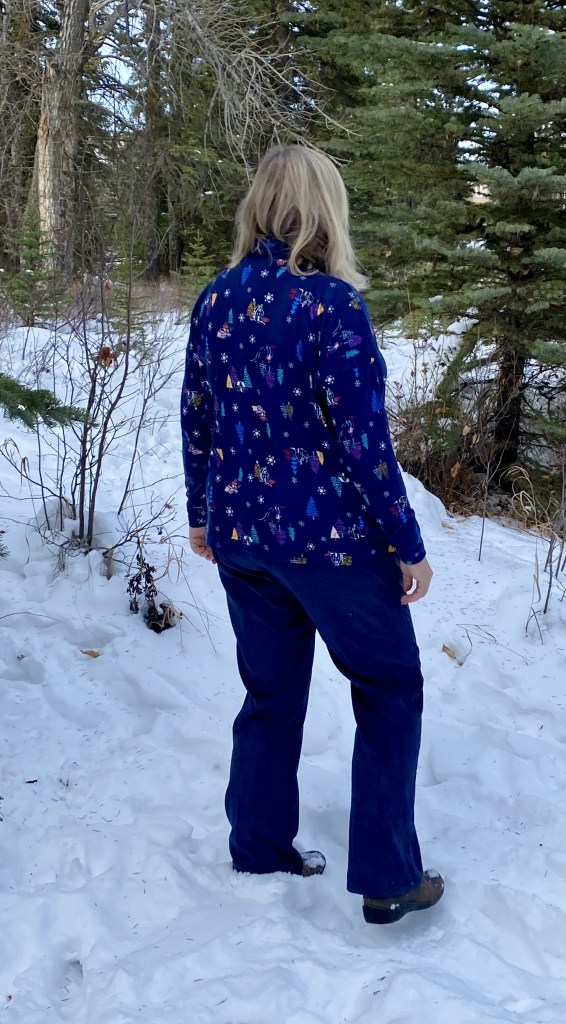
I made two mistakes when sewing the pants and both were simply a result of a lack of experience working with corduroy. The first was neglecting to sew a test buttonhole on scrap fabric. That resulted in a good hour of unpicking after I made the same mistake twice! The second error is more embarrassing but I know I’m not the first nor will I be the last to do this. When I cut out the cord I didn’t even think about the nap of the fabric. So my finished pants has the nap going up on the front and down on the back. It makes a difference! I’m hoping that no one will notice and if they do, they’re looking too closely.
These pants are super comfortable. I like the drape with the boot cut shape.
Top
The second part of my outfit is a loose-fitting turtleneck that is perfect for winter weather.
When I was shopping Fabric Mart in the middle of October there were a number of fun holiday print fabrics and I just couldn’t resist this brushed sweater knit with Christmas trees and cabins in non-traditional colours. I think this print will be wearable throughout the winter, not just over the holiday period. This sweater knit is a poly/lycra blend and the stitches are very fine so it feels like a jersey. It has lovely drape and feel cosy but not too warm.


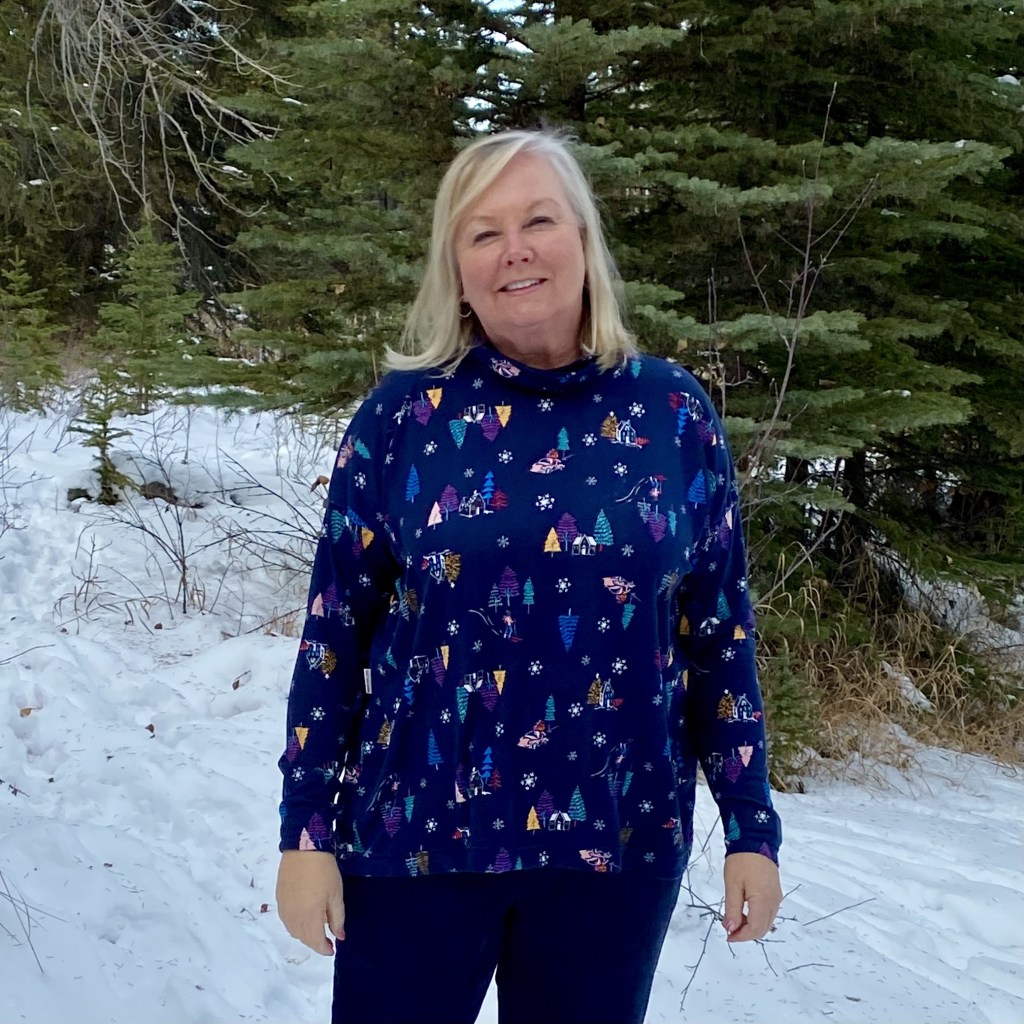
I went back to a favourite pattern, the Jalie Emilie. This free, downloadable pattern is sized for girls aged 2 through bust measurement of about 51″. It’s oversized with dropped shoulders and a turtleneck collar. I’ve used this pattern several times and love it because it’s such a fast make and is a great shape for wearing over tights or pants. And it’s fast! You can sew the whole sweater on the overlocker or serger, or on a sewing machine. The only change I make when sewing this top is to slightly change the shape of the columnar tube collar so it’s more loose fitting around the neck.
As you can see, we’re already in winter mode here in western Canada! I know I’ll get lots of wear out of both of these pieces. Only about seven months of winter to go!



